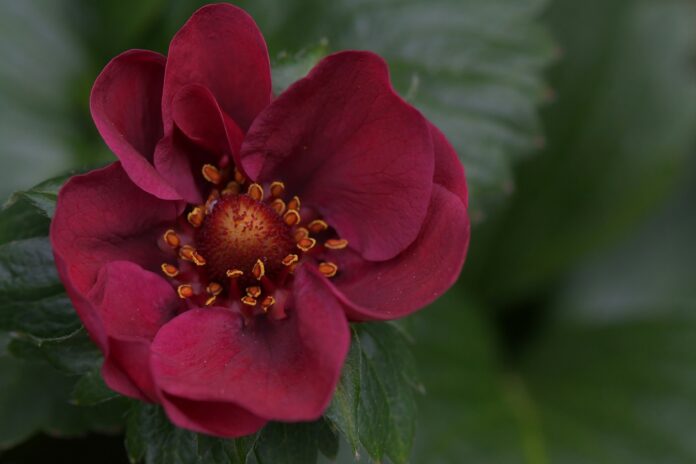Have you ever bought a beautiful bouquet that only lasted a few days? The disappointment of wilted petals, drooping stems, and unpleasant-smelling water is familiar to everyone. Money wasted, mood ruined, and beauty gone too soon. It’s a painful feeling when you realize that the bouquet could have lasted much longer if you had known a few simple secrets.
Many people think that cut flowers are doomed to wilt quickly. That’s just the way they are. But this is a big misconception. There are proven ways to extend the life of a bouquet several times over. The main secret lies in what we add to the water for our flowers.
Flower food is not a marketing ploy by florists, but a scientifically proven solution. These little packets contain a special formula that works like vitamins for cut flowers. Once you understand how this mechanism works, caring for bouquets becomes simple and effective.
What Is in Flower Food?
The composition of professional flower food is the result of many years of research by botanists and chemists. What is in flower food is a question that interests many flower lovers. Each component performs a specific function and works in combination with other ingredients.
The main components of flower food:
- Sugar or glucose. This is the main source of energy for cut flowers. After cutting, the plant loses its ability to photosynthesize and cannot produce nutrients on its own. Sugar compensates for this loss and gives flowers the energy they need to maintain their vital processes.
- Antibacterial substances. These prevent the growth of bacteria and fungi in the water. Clean water is the key to a long life for your bouquet. Microorganisms clog the stem’s conducting vessels and prevent water from reaching the petals.
- Acidity regulators. These maintain the optimal pH level of the water. An overly alkaline or acidic environment impairs the plant’s ability to absorb water and nutrients. The ideal pH level for most flowers is 3.5-4.5.
- Growth stimulants. These help flowers to open fully even after being cut. Some buds can continue to develop in a vase thanks to these substances.
- Mineral supplements. They provide flowers with essential micronutrients. Potassium, magnesium, calcium, and other minerals support cellular processes and preserve the structure of petals.
Professional florists know that high-quality cut flower food can extend the life of a bouquet by 2-3 times. This is especially important for expensive and rare flower varieties that you want to keep as long as possible.
The concentration of each component is selected to create the ideal environment for cut plants. Too much sugar will attract bacteria; too little will not provide enough energy. Balance is the key to success.
DIY Cut Flower Food – Homemade Alternatives
Professional flower food is not always available. In such cases, you can prepare an effective alternative at home. Homemade cut flower food will not completely replace professional formulas, but it will significantly extend the life of your bouquet.
Classic recipe for homemade fertilizer:
- One teaspoon of sugar per liter of water — provides flowers with energy. It is better to use regular white sugar rather than cane sugar or other types. They contain additional impurities that can upset the balance.
- One teaspoon of bleach per liter of water — kills bacteria and fungi. Use only pure chlorine bleach without fragrances or dyes. It is important to follow the proportions exactly.
- Two teaspoons of lemon juice per liter of water — creates an acidic environment that promotes better water absorption. Freshly squeezed juice is preferable to bottled juice.
- Aspirin and sugar — dissolve one aspirin tablet and a teaspoon of sugar in a liter of water. Aspirin acts as an antibacterial agent and can prolong the freshness of flowers.
- Lemon and baking soda solution — mix a tablespoon of sugar, a tablespoon of lemon juice, and a teaspoon of baking soda per liter of water. This mixture is especially effective for roses and peonies.
- Vodka and sugar — add a tablespoon of vodka and a teaspoon of sugar per liter of water. Alcohol prevents bacterial growth, and sugar nourishes the plants.
Important to remember: homemade recipes require more frequent water changes. Homemade mixtures are less stable than professional ones, so the water should be changed every 2-3 days instead of every week.
What to put in water for flowers is a matter of experimentation and personal experience. Some flowers respond better to certain additives. Roses love aspirin, tulips love lemon juice, and chrysanthemums thrive with a little baking soda.
Should You Put Bleach in Flower Water?
The question of using bleach in flower water is a hot topic among flower lovers. Some think bleach is dangerous for plants, while others swear by it. As always, the truth is somewhere in the middle.
Bleach in the right concentration is a powerful antibacterial agent. It prevents the growth of microorganisms, which are the main cause of rapid wilting of cut flowers. Bacteria and fungi clog the conducting vessels of the stem, preventing water from reaching the petals.
Rules for safe use of bleach:
- Precise dosage. Use no more than one teaspoon per liter of water. Excessive concentrations can burn the stems and accelerate wilting instead of prolonging the life of the flowers.
- High-quality product. Use only pure chlorine bleach without fragrances, dyes, or additional chemical additives. These substances can harm plants.
- Regular replacement. Water with bleach should be replaced every 3-4 days. Over time, the chlorine evaporates and the protective effect decreases.
- Trimming the stems. Each time you change the water, trim the stems under running water. This removes blocked areas and ensures better absorption of the fresh solution.
For those who prefer to order roses online from professional suppliers, it is essential to know that many florists already treat the stems with special compounds. In such cases, additional bleach may be unnecessary.
Alternatives to bleach:
- Hydrogen peroxide — a milder alternative, especially effective for delicate flowers
- Vinegar is a natural antiseptic that also acidifies the water.
- Silver coins are an old method based on the antibacterial properties of silver.
It is crucial to observe the reaction of specific flowers. Some varieties of roses tolerate bleach very well, while gerberas may react negatively. Experience and experimentation will help you find the optimal composition for your favorite flowers.
How Often Should You Change Flower Water?
The frequency of water changes is one of the most critical factors in caring for cut flowers. Many people underestimate this simple action and are then disappointed by the rapid wilting of their bouquet. Stagnant water becomes a breeding ground for bacteria and a source of unpleasant odors.
Water replacement schedule depending on conditions:
- In summer and warm rooms, every 1-2 days. High temperatures accelerate the growth of bacteria and the evaporation of water. Flowers consume more moisture and contaminate the water more quickly with their waste products.
- In winter and cool conditions, every 3-4 days. Low temperatures slow down biological processes, and the water stays clean longer. But don’t forget to change it regularly — even in cold weather, bacteria still grow.
- When using fertilizer, according to the instructions on the package. Professional flower food contains preservatives that extend the life of the solution up to a week.
Pro Tips for Flowers in Water
Professional florists know many secrets that help prolong the life of cut flowers. These techniques for keeping flowers in water are based on an understanding of plant physiology and years of experience working with different varieties.
Secrets of stem preparation:
- Cut at an angle underwater. This increases the absorption area and prevents air pockets from forming. Use a sharp knife rather than scissors, which can squeeze the vessels.
- Crushing the ends. For thick woody stems, lightly crush the end with a hammer. This increases the contact area with the water.
- Removing the bark. Remove the bark from the bottom of the stem for 3-5 cm. The bark prevents water absorption.
- Piercing. For hollow stems, pierce them in several places with a needle. This will prevent air pockets from forming.
Remember: every bouquet is unique, and what works for some flowers may not work for others. Observe the reaction of your flowers in water and adjust your care accordingly. Over time, you will learn to sense the needs of different varieties and be able to prolong their beauty for weeks.
Investing in quality flowers and proper care pays off handsomely. A bouquet that brings joy for two weeks instead of three days gives much more positive emotions and justifies every penny spent.






